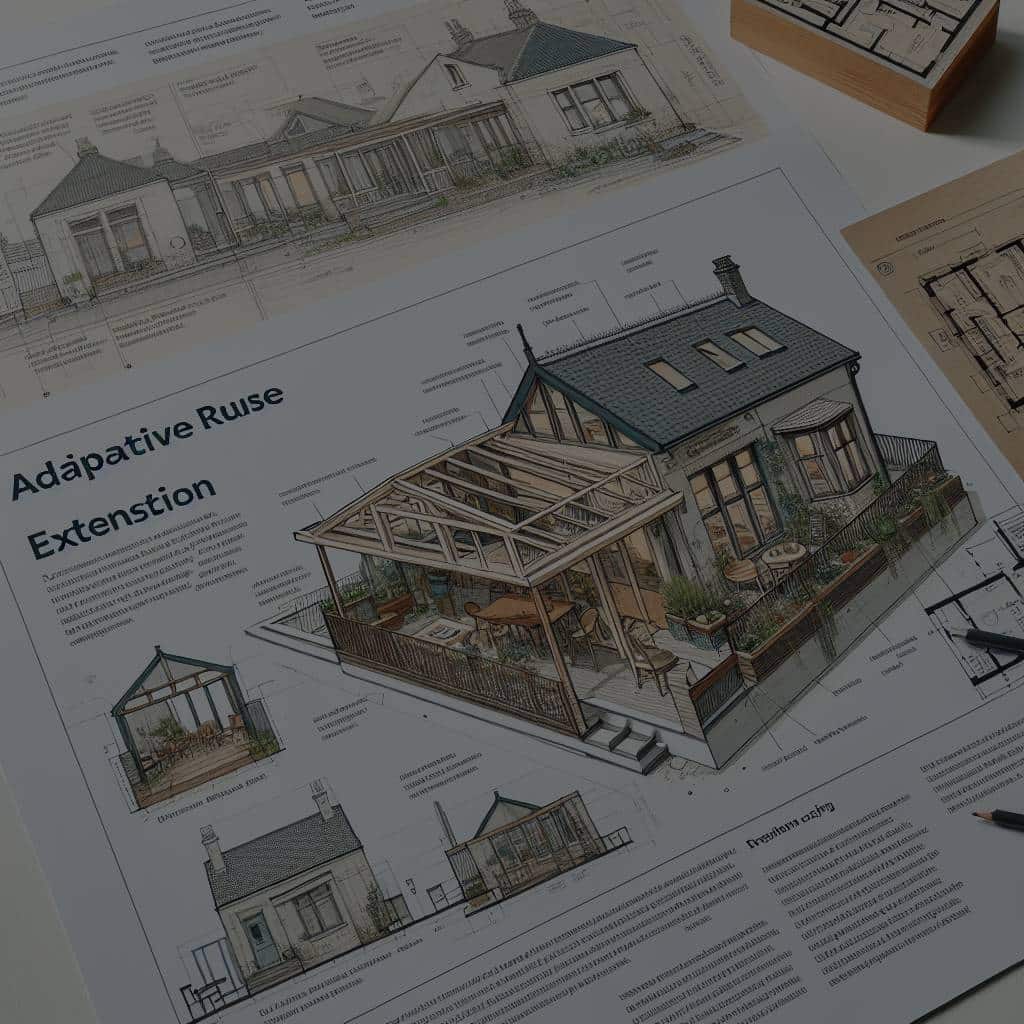What Are the Best Practices for Incorporating Adaptive Reuse Architecture in Home Extensions?

Adaptive reuse architecture is a powerful approach to the design and renovation of our living spaces. It allows us to preserve the historic fabric of our cities and towns while also making them sustainable and energy-efficient. But how can you incorporate adaptive reuse architecture into your home extension project, and what are the best practices you should follow? This article will guide you through the process.
The Basics of Adaptive Reuse Architecture
Adaptive reuse architecture is a design philosophy that advocates for the preservation and repurposing of existing buildings and structures. Instead of demolishing old, disused, or underutilized buildings, adaptive reuse suggests that they be transformed into spaces that meet contemporary needs.
Also read : How to Choose the Most Durable Surfaces for High-Use Family Kitchen Counters?
For many communities, the benefits of this approach are numerous. Not only does it help conserve historical heritage and local character, but it also contributes to sustainability. Instead of expending energy and resources to build new structures, reusing existing ones economizes those resources, and can often be more cost-effective.
To incorporate adaptive reuse principles in your home extension project, you should prioritize the conservation of original materials and architectural features. This can include everything from structural elements like beams and columns, to interior finishes like fireplaces and windows.
This might interest you : Air source heat pump installation: your guide to efficiency and savings
The Importance of Comprehensive Design Planning
As you prepare to embark on your adaptive reuse home extension project, the first step is to craft a comprehensive design plan. This plan should take into account existing structures and materials, your own needs and desires, and any potential hurdles you might face.
Community involvement and consultation are also key elements at this planning stage. The existing building may hold cultural or historical importance for your community, and their input can be invaluable in designing a project that respects and enhances this heritage. It’s also a way to ensure that your project will be welcomed and supported by your neighbors.
With a solid plan in place, your adaptive reuse project will be ready to move on to the next step: the actual transformation of the existing space.
Transforming Spaces through Adaptive Reuse
The transformation phase is where the magic of adaptive reuse really happens. Here, the existing space is repurposed to serve new functions while preserving its original character and materials.
This process can involve a variety of techniques and approaches. For instance, it might mean leaving some parts of the structure exposed to showcase the building’s historical elements. Or it could involve using sustainable materials and energy-efficient methods to improve the building’s performance.
Throughout this process, it’s important to maintain a flexible attitude. Adaptive reuse often involves unexpected challenges and surprises, and the ability to adapt and find creative solutions is key to the project’s success.
Ensuring Energy Efficiency and Sustainability
Incorporating sustainable design principles is crucial when undertaking an adaptive reuse project. Not only does this reduce the building’s environmental footprint, but it also can result in significant cost and energy savings in the long run.
To ensure energy efficiency, consider incorporating renewable energy systems and maximizing natural light and ventilation. Insulate the building well to prevent heat loss and gain, and use energy-efficient appliances and lighting fixtures.
Consider also the lifecycle of the materials you use. Choose sustainable, recycled, or reclaimed materials whenever possible. This not only reduces the project’s environmental impact, but also can contribute to the building’s character and help preserve its history.
Respecting Heritage while Creating Modern Comforts
One of the great challenges of adaptive reuse is balancing the need to preserve a building’s historical character with the desire for modern comfort and functionality. But with careful planning and creative design, it’s entirely possible to achieve both of these goals.
Respect for the building’s original architecture should be at the heart of your project. This might mean preserving original features and finishes, or using materials and colors that are in tune with the building’s history.
At the same time, don’t shy away from introducing modern elements and conveniences. A successful adaptive reuse project isn’t about creating a museum piece, but about creating a living, vibrant home that meets your needs and desires. This might mean opening up spaces, adding new windows or doors, or installing modern appliances and fixtures.
Remember, the secret to a successful adaptive reuse home extension project lies in respect for the past, planning for the future, and a willingness to adapt and innovate. With these principles in mind, you’re well on your way to creating a home that’s truly unique, sustainable, and rich with history.
The Role of Technology in Adaptive Reuse Architecture
In the realm of adaptive reuse, the role of technology, particularly 3D modeling and virtual reality, cannot be overstated. These tools enable architects and planners to better understand the spatial constraints and opportunities of a building before transformation. This knowledge is invaluable when it comes to planning and designing a reuse project.
For instance, 3D modeling can assist in the visualization of the potential outcomes of the project, providing a clear picture of how the space might look and feel once the work is completed. This can help stakeholders make informed decisions and can also be an effective tool for communicating the project’s objectives to the wider community.
Virtual reality, on the other hand, can provide an immersive experience of the proposed design. This technology allows you to "walk" through the space, gaining a deeper understanding of the scale and relationship between different elements.
Additionally, the use of Building Information Modeling (BIM) facilitates the integration of energy efficiency considerations into the design process. BIM not only helps to understand the existing conditions of a building but also allows for energy modeling and simulation. This can be crucial in ensuring that the proposed design will not only retain the cultural heritage of the building but also achieve desired energy efficiency levels.
In essence, technology can play a pivotal role in the successful execution of adaptive reuse projects, acting as a bridge between the past and the future.
Conclusion: Breathing Life Into Existing Buildings
There is no denying the beauty and practicality of adaptive reuse architecture. By breathing life into existing buildings, we not only get to preserve our cultural heritage, but we also make strides in energy efficiency and sustainable design.
Adaptive reuse is the perfect marriage of the old and the new. It allows us to build on the past while looking to the future, respecting our history while also addressing modern needs and concerns. By preserving and repurposing historic buildings, we give them a new lease on life, ensuring they remain relevant and functional for years to come.
However, successful adaptive reuse projects require careful planning, community consultation, and a delicate balance between preservation and innovation. One must respect the past, yet not be afraid to introduce modern elements and conveniences. The use of technology, such as 3D modeling and BIM, can greatly assist in achieving this balance.
The case studies of successful adaptive reuse projects serve as testament to the potential of this approach. Whether it’s turning a disused factory into affordable housing, or transforming a historic barn into a modern home, adaptive reuse is an exciting, creative, and sustainable solution for our built environment.
In conclusion, adaptive reuse is not just about building conversion; it’s about giving history a future. It’s about understanding the value of what came before us and carrying it forward in a way that is meaningful, relevant, and sustainable. It’s about celebrating our past as we build for our future. This is the essence and beauty of adaptive reuse architecture.
